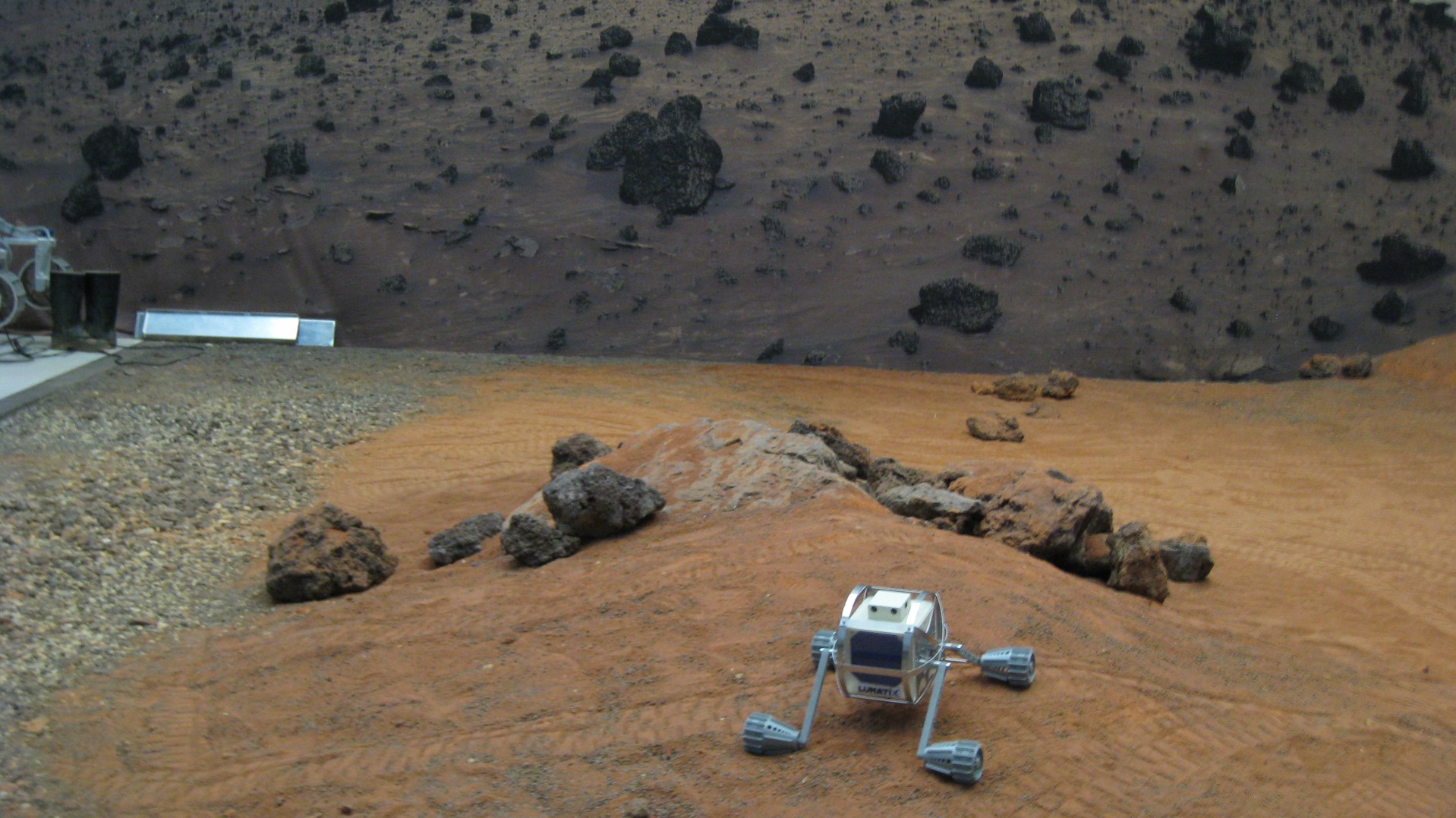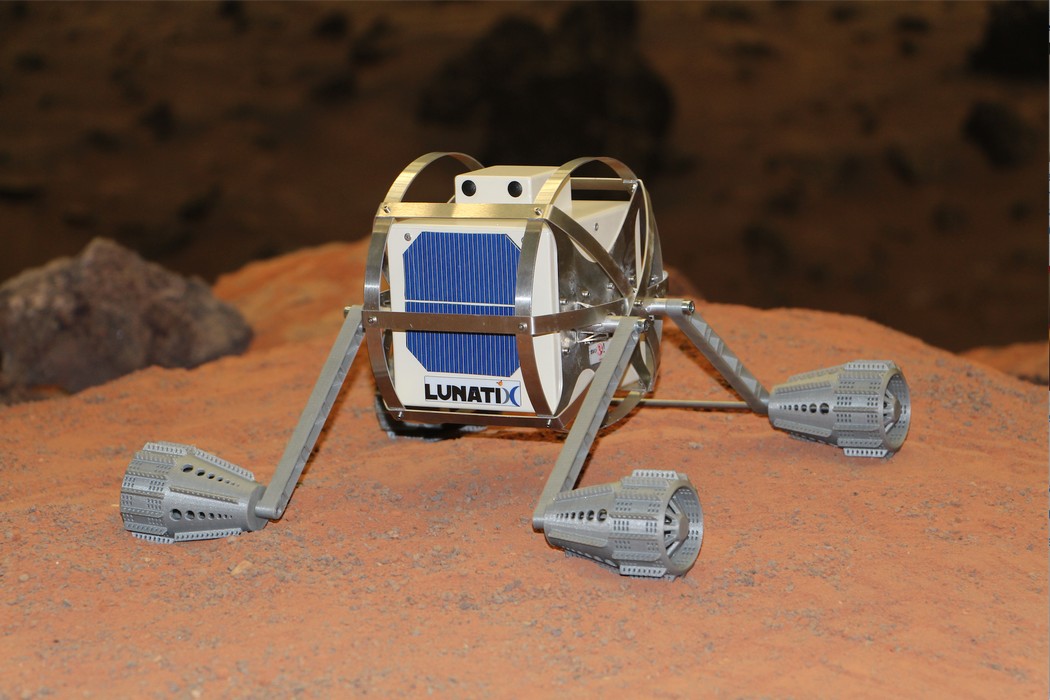 |
| Image: Lunatix |
The last couple centuries have been hard for explorers. Humans have visited almost all of the places on Earth a thousand times over at this point, and it can feel like there's just nowhere to go that's completely new, fresh, and unexplored. But soon, would-be explorers will be able to use a robot to explore the next frontier—the Moon.
A team of space engineers is working on a way for people to explore the Moon without going through all those pesky astronaut requirements. If their plan succeeds, you'll soon be able to control high-tech lunar nanobots from that old desktop computer in your bedroom.
The project, called Lunatix, is currently in the planning stages. If all goes according to plan (the team still has to figure out a way to fund the initiative), they'll have a working model on the Moon in the next four years. Players will be able to drive a nanobot—a three-pound, four-wheeled rover—across the surface of the Moon through a video game on their home computer. Players would also be mapping out parts of the Moon that have never been explored by humans.
According to Jorge Fiebrich, engineer at the European Space Agency and one of the founders of project Lunatix, he and his colleagues turned to the international gaming community because of the huge amount of users, and because of the potential revenue source for their fledgling business idea. PC gaming revenues are expected to reach $29.4 billion in 2017.
Fiebrich and his team consulted gaming companies, including Valve, the creators of Half-Life and the gaming marketplace Steam, and told me that they were very interested in their idea.
"We ran interviews with scientists, gamers, and random users we met and the feedback we got was overwhelming," Fiebrich said. "People would love to actually control real hardware which is out there in space. It was just so overwhelmingly welcomed."
Users would be able to control the nanobot through a program on their computer and see through the camera connected to it. To deal with the signal delay between Earth and the Moon—Fiebrich said it would be about three seconds—the team is adding augmented reality animations to show the user that their actions are being processed. "We don't want to use the standard Windows turning wheel, because that would be frustrating," he said.
Lunatix plans on sending five nanobots to the Moon for now. The first would be sold outright to the highest bidder—Fiebrich estimates the starting bid at around $15 million—and that one person would have full control over the nanobot. Users would be able to buy timeslots on the next two, which would cost about $500 for only 20 minutes.
And if players don't want to front the cash to buy a slot, Fiebrich said they're working on a virtual version that users can play for credits. (Since the bots won't be able to operate during lunar nights, the virtual program would also serve to keep players busy until they're available again.) The last two nanobots will be playable through spending these credits.
"Regardless of what your income is, you should have the possibility to control real hardware," Fiebrich said.
Fiebrich estimates that the four publicly available nanobots can do about 60 slots per day—240 slots in total—for two weeks at a time before having to hibernate during the cold 14-day lunar night, when the Moon is halfway rotated around the Earth and temperatures drop to about -170 Celsius. (The bots are designed to be solar powered.)
While the users are driving the nanobots around, their cameras and sensors will be mapping out the surface of the Moon and noting information about the temperature and the soil. Gamers exploring the surface would become pioneers of sorts.
"We're there anyway, we might as well collect some data and help humanity to get off this rock," Fiebrich said. "If you can't contribute by actually going to the Moon, you might be able to contribute from your home PC and take part in this exploration." They're aiming to launch their nanobots on one of private space research company Astrobiotic's Peregrine landers, which plans to send any sort of experiment or technology to the Moon or its orbit as long as you can front the multi-million-dollar bill. The Peregrine's first launch is planned to be in 2019 aboard a United Launch Alliance vehicle.
Fiebrich said that the nanobots wouldn't be able to reach the dark side of the Moon without additional relay satellites, since there wouldn't be a line of sight with the Earth.
The nanobot was created with the ESA's vision for a Moon village in mind. An idea first brought up by the ESA's director general, it's intended to replace the International Space Station by creating a cluster of bases and research ports on the Moon to be shared by the global space community (though it's not expected to happen before the 2020s). Fiebrich said that the data collected by the players could be used to figure out where to put these villages.
"I would be thrilled to be able to control any hardware in space, or on the Moon," Fiebrich said. "But if I know that this might actually help humanity build lunar settlements later on—it might be in a few years or a few decades, I don't care—but if I know that I have contributed to that, hell, that would be amazing. Sign me up."
Via Motherboard
Via Motherboard



